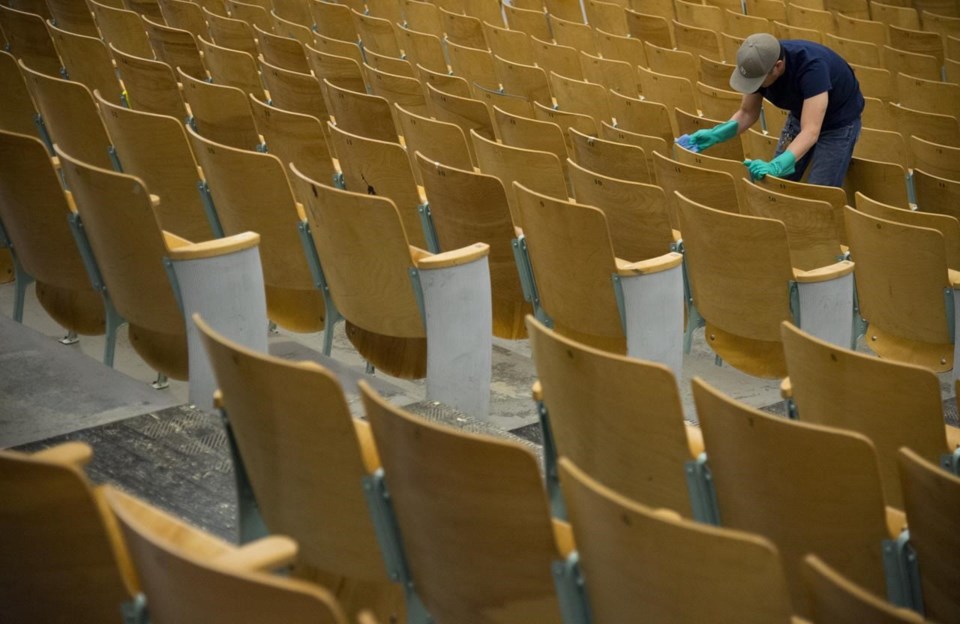VANCOUVER — When students board the school bus on Monday in Williams Lake, B.C., they'll be greeted by a bus driver wearing a protective visor and will take a seat by themselves unless they live with another student.
Parents who take their kids to school will be asked to stay outside or make an appointment to reduce the number of adults who don't need to be in the building.
Superintendent Chris van der Mark of the Cariboo-Chilcotin School District said in an interview these are some of the first differences families will notice, as schools across British Columbia increase capacity to more students.
Schools will have consistent procedures for site access, cleaning and hygiene and physical distancing. However, exactly what that will look like will vary because every school property is different, he said.
"This won't be perfect, but just as people adjusted to the initial suspension of service, I am confident we will do so again," he said in a letter to families May 22.
British Columbia is reopening schools to the broad student body on an optional basis, leaving it up to families to decide if they want to go or continue learning from home.
It's the latest pivot school staff have had to make in response to the COVID-19 pandemic and one that the teachers' union says is still full of unknowns.
The B.C. government is providing health and safety guidance in co-ordination with public health officials and it's up to school districts to determine class scheduling and transportation.
For most students in kindergarten through Grade 5 that will mean half-time attendance, such as alternating days, while grades 6 to 12 will go to school about one day a week, the government says.
About 5,000 students, including the children of essential service workers and those needing extra support, are already in classrooms.
But B.C. Teachers Federation President Teri Mooring said a lot of what schooling looks like in June depends on how many students actually show up.
Only some school districts conducted surveys of families asking whether they planned to send their kids back to school and the results varied between a high of 90 per cent and a low of 15, she said.
Even surveys aren't necessarily good indicators of uptake. Early in the pandemic, about half of essential workers said they planned to keep sending their kids to school but only 30 per cent did, she said.
"It's hard to know exactly what that's going to look like until we see the kids who come through the doors on Monday," Mooring said.
Some students won't have the same teacher as staff are shuffled to accommodate the new schedules and smaller class sizes, she said.
About one in 10 teachers are requesting to keep working from home because they have a higher vulnerability to COVID-19, which means they'll likely be dedicated to teaching students who stick with remote learning, Mooring said.
A common model will see other teachers work four days a week in class then the fifth remotely, she said.
"That won't be maybe such a big deal if most of their class returns. It will be quite a big problem if most of the class does not return."
The union is concerned about teacher burnout as they try to make up the difference.
"I'm worried about the number of hours they may be putting in," Mooring said.
Some classes won't look the same. There will be no sharing of instruments in music class, for example, or even of pens and pencils.
School staff and administrators have no plans to stop those programs.
"We know that music is really important, especially when you've gone through a difficult time. These types of experiences are really highly valued when there's high stress level so it's vital that these programs continue," Mooring said.
For the time being, it will mean studying music in a different way.
In North Vancouver, about half of families surveyed said they planned to send their kids back to kindergarten through Grade 5, school board chairwoman Christie Sacre said.
As a result, the district has planned for half of those students to attend on Mondays and Tuesdays and the other half on Thursday and Fridays.
Any "maybe" families have been asked to alert their school the Wednesday before they decide to return.
While door knobs, toilet seats, keyboards and other high-contact surfaces will be cleaned throughout the day alongside other cleaning, she said Wednesdays will also be dedicated to a "deep clean" of the building.
Arrival will occur on a staggered basis and so will recess and breaks, she said. Hallways will also become one-way corridors.
"We need to make sure our hallways are not full, and we don't have kids going in different directions in hallways and that kind of thing," she said.
School staff have been nimble in their response to the pandemic and she gave the example of a librarian who took it upon herself to deliver kids book door-to-door.
The school district is working hard to make sure everyone who returns feels comfortable and safe doing so, she said.
"Some people think we should never have shut schools down and others can't believe they're opening them up," she said.
"We need to step back and not judge people for the decisions they make."
This report by The Canadian Press was first published May 31, 2020.
Amy Smart, The Canadian Press



